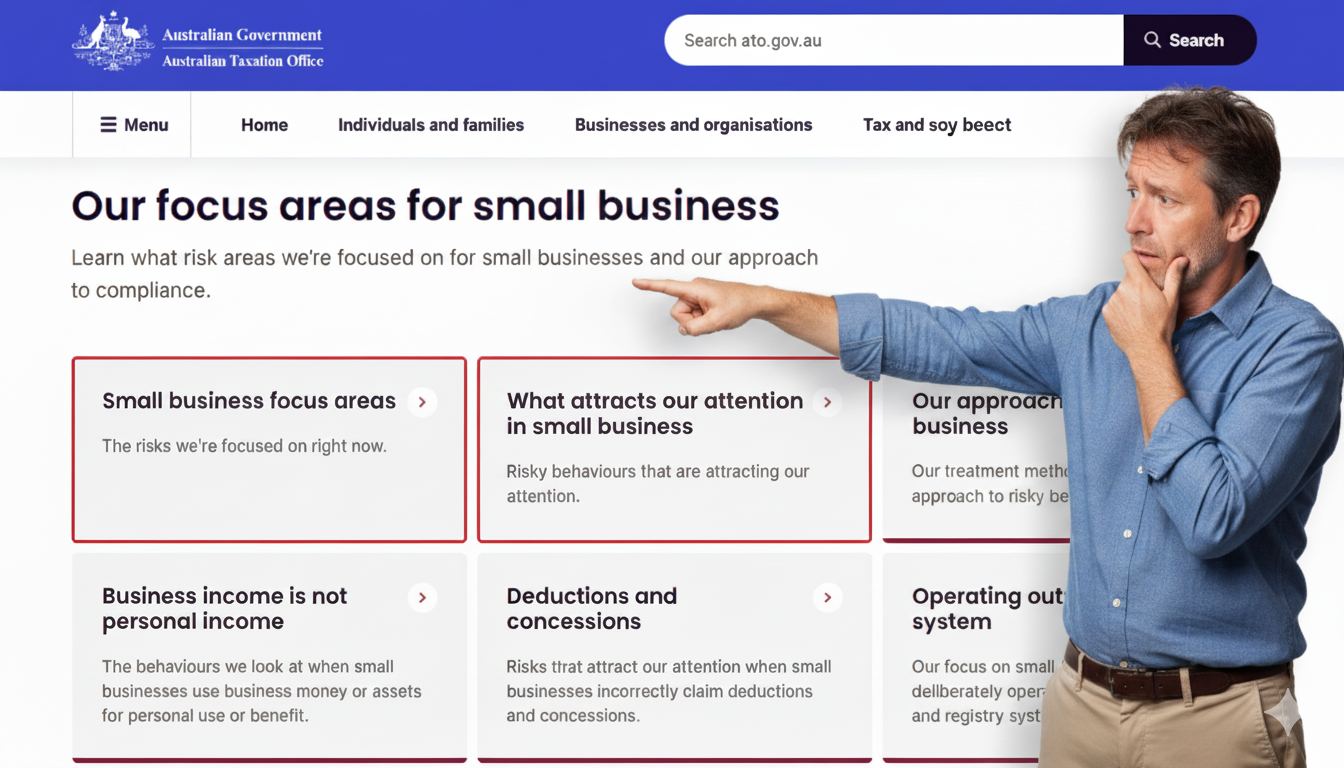Superannuation Payment Traps + “PayDay Super” Coming Soon – Details Revealed
Time’s running out faster than most business owners realise. From 1 July 2026, Australian businesses will need to pay superannuation contributions at the same time as wages – and honestly, this represents one of the most significant changes to our super system in decades. The Government introduced the Treasury Laws Amendment (Payday Superannuation) Bill
Property Investing ATO Targets: 5 Compliance Traps Examined
Quick Summary: The ATO has escalated enforcement of accurate tax returns for property investors by using AI and data-matching to identify an estimated $1.2+ billion tax gap from rental properties. Property investing ATO targets now focus on five critical areas: mixed loan interest claims, repair versus capital improvements, unreported income, joint ownership e
ATO Interest No Longer Tax Deductible in 2025: What Every Business Owner Needs To Know
Quick Summary: ATO Interest (GIC) Tax Deductibility Changes – 1 July 2025 From 1 July 2025, businesses can no longer claim tax deductions for ATO interest charges including General Interest Charge (GIC) and Shortfall Interest Charge (SIC). This change makes tax debts significantly more expensive – what used to cost $100 in after-tax dollars now [&he
Super Guarantee Rate Increase 2025: How the 12% Change Affects Your Business
Quick Summary The superannuation guarantee rate increased from 11.5% to 12% on 1 July 2025 – the final scheduled increase in this series. All eligible employees must receive the 12% rate for salary and wages paid from 1 July onwards, even if the pay period started before this date. This represents the largest employer cost […]
Minimum pension payments 2025: what SMSF owners must know (and what happens if you get it wrong)
Quick Summary and FAQ’s Question 1. In the ’25/26 Financial Year, what must SMSF owners know about minimum pension payments? Answer: For the 2025/26 financial year, SMSF owners must know that the standard minimum pension drawdown rates apply. These rates are a percentage of your super balance on July 1st, 2025, and are determined by […]
What the ATO’s Latest Compliance Focus Means for Business Owners: 2025 Reality Check
2025 ATO Compliance Focus – Quick Summary The ATO has intensified compliance activities targeting the $35.6 billion owed by small businesses, with enhanced data matching programs and stricter enforcement measures introduced from July 2025. Key changes include AI-powered data matching across 60+ sources, mandatory monthly GST reporting for 3,500 non-compli
Why Every Business Should File an FBT Return – Even If You Think You Don’t Need One
The Fringe Benefits Tax year wrapped up on 31 March 2025. If you’re sitting there thinking “we don’t provide fringe benefits, so this doesn’t apply to us” – you might want to think again. The ATO has been getting increasingly aggressive about FBT compliance. They’re using AI data-matching tools now to hunt down employer
How Can Directors Take Money Out of Their Company
Extracting funds from your company involves more than simply reaching into the business account. The Australian Taxation Office (ATO) keeps a watchful eye on how business owners access their company money, and different methods come with distinct tax implications. Proper planning can help you minimise your tax burden while staying completely compliant with regu
7 Tax Planning Advantages
Start Preparing Now for End of Financial Year BOOK NOW! Know your estimated tax position and be tax ready. Tax time provides an opportunity to thoughtfully review your finances and plan ahead. By planning early and getting professional advice about all possible deductions and steps you may need to put in place now, you can […]
The Impact of Interest Rate Cuts on Australian Small Businesses: A Mixed Outlook
Recently Sean Aylmer from the podcast “Fear and Greed” interviewed Patrick Coghlan who is the CEO at Creditor Watch. Here are some summary highlights from the interview: The recent interest rate cut has provided some relief for homeowners, but what does it mean for small and medium-sized businesses (SMEs) in Australia? While positive indicators we












